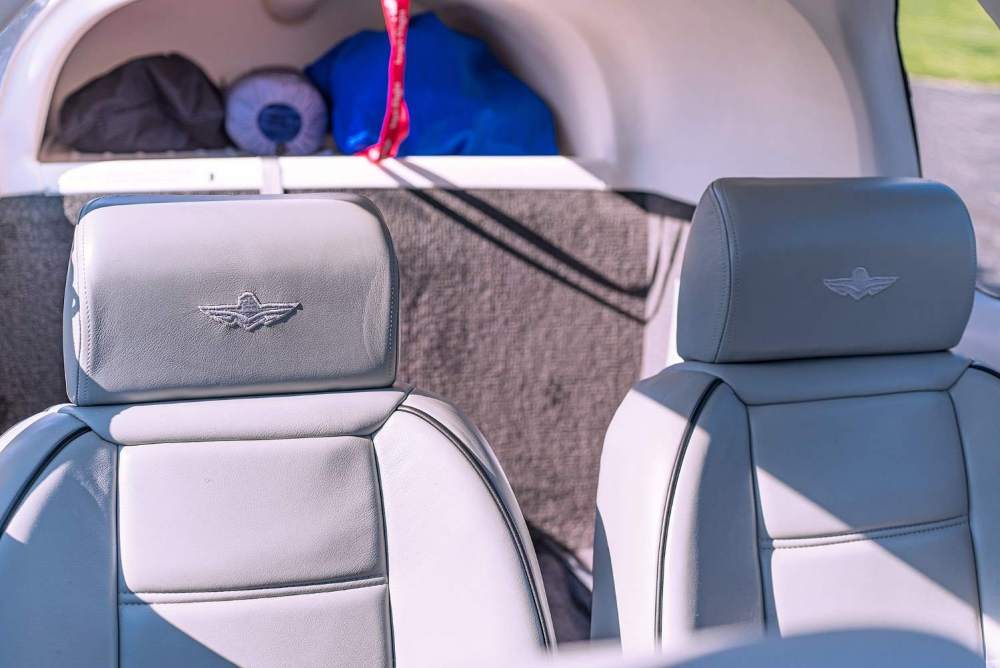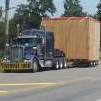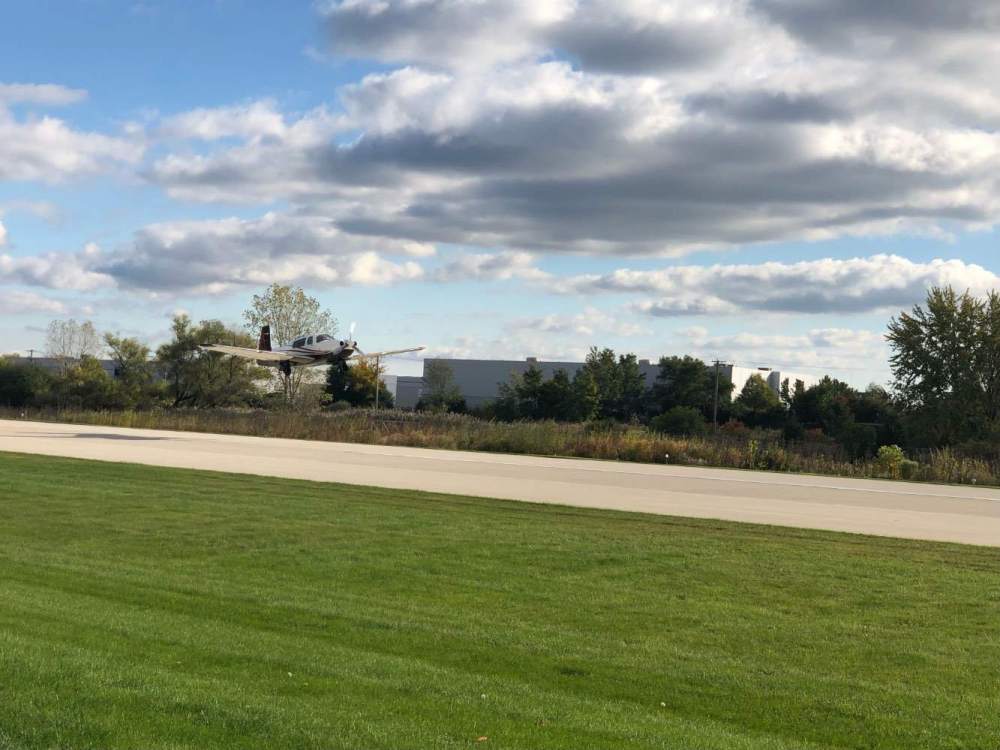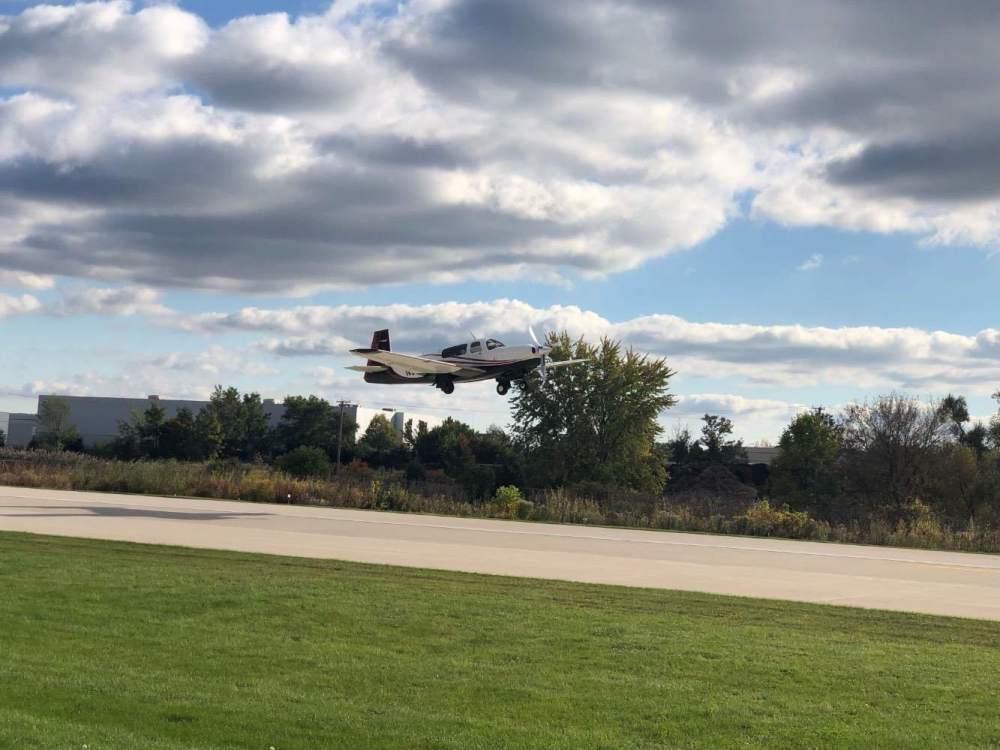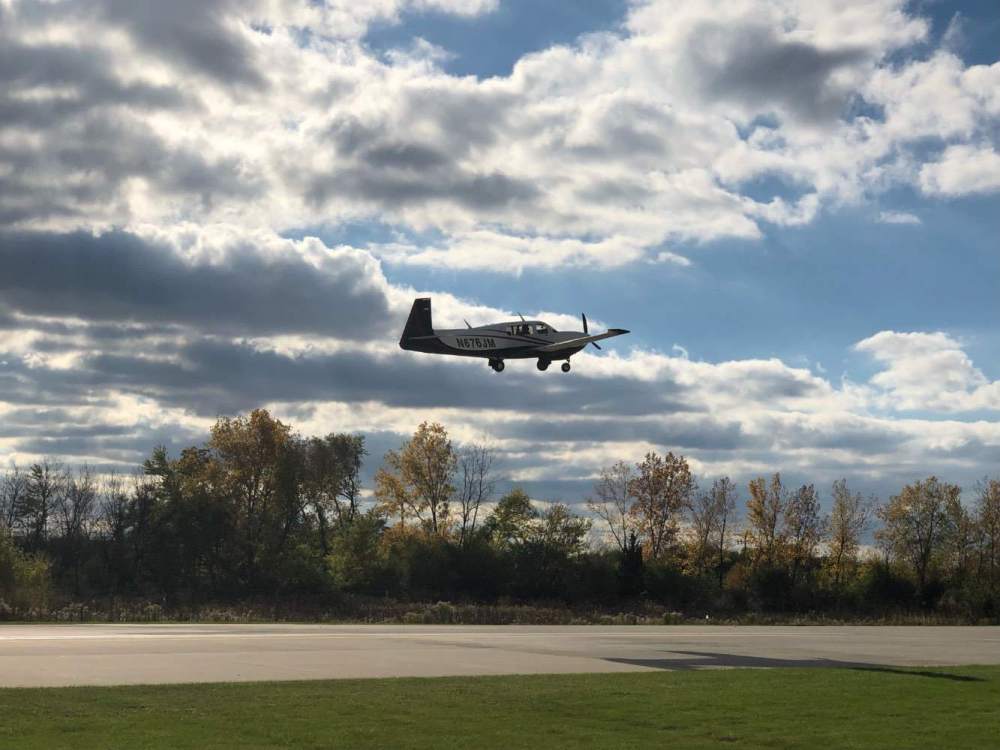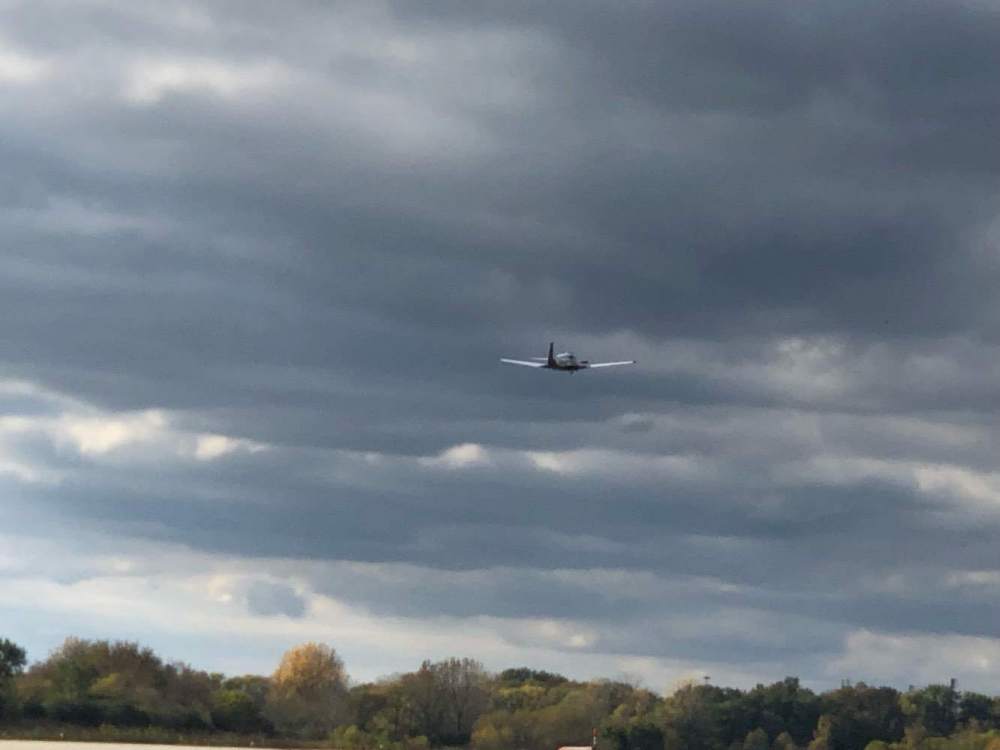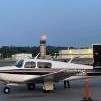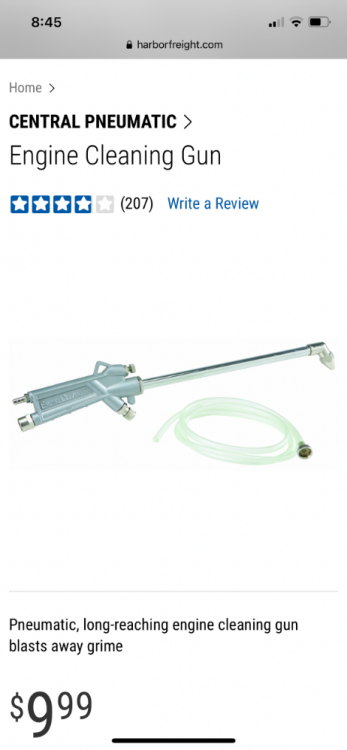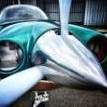Leaderboard
Popular Content
Showing content with the highest reputation on 11/07/2021 in all areas
-
Getting back to the original question here before this thread had to shift to correcting misunderstandings of cardiopulmonary physiology. 10ppm in flight in and of itself should be no big deal, though admittedly its impact on hemoglobin oxygen delivery to tissue would increase as altitude goes up in a way that the OSHA standard levels don't fully capture. I originally didn't want a Sensorcon specifically because I didn't want to know about levels that low getting into the cockpit in flight - it provides a meaningless number as a source of stress without detecting real hazard. One could reasonably look for small gaps in the firewall and cabin floor that could be sealed easily based on that information, but those gaps aren't ever likely to become really dangerous. I've changed my opinion a bit after the experience of @AlexLev. He saw very low levels in the cockpit with the heat on, but his baseline with heat off was zero in flight. I told him to blow it off (pun intended?). Investigating further led to him finding a minute hole in his muffler leaking into the heat shroud - that tiny hole could have grown rapidly to become seriously life threatening in a hurry on a cold winter flight. It was a good early catch that was facilitated by the high sensitivity of the Sensorcon. I think the bottom line is that low levels are acceptable in cruise and perhaps inevitable on the ground. However, any increase upon turning on the heat warrants close inspection of the muffler.4 points
-
4 points
-
Yup - I should have added any significant change from baseline (even at "safe" levels) for a given flight condition should warrant close inspection of the entire exhaust, not just the muffler. Also @PT20J makes an important point regarding much more CO at rich mixtures. The graph below is the best I could find to illustrate. Mixture changes obviously have a big impact while ROP, so it's not alarming for the baseline to be higher at takeoff and after GUMPS. Below a stoichiometric mixture, the curve flattens out significantly, but there are still potentially threatening levels of CO produced at even the leanest combustible mixture, so being deep LOP does not assure safety.3 points
-
I actually wish you would go into your medical background because you’re really confusing some pretty fundamental concepts. The O2 level in the cockpit is completely irrelevant for the exact reason you mentioned in your post - everyone has different physiology. If my SpO2 is 88% and my son’s is 96% then I need supplemental oxygen and he would not be likely to benefit from it. It’s not about “wasting” oxygen it’s about titrating a medical therapy to a clinically relevant endpoint (which is something I do every day at work). I appreciate you have a little knowledge on the subject and are eager to share, but please consider that not everyone has the background and ability to differentiate between the well meaning and misinformed, malicious and intentionally misleading, and accurate medical information (as we’ve proven in the last 20 months). With all due respect, if you don’t know what you’re talking about then please keep it to yourself. No one needs this right now. There’s a reason we monitor cockpit CO levels and individual SpO2 levels. As one of my son’s t shirts says (available for purchase at his Etsy store) “I can explain it to you, but I can’t understand it for you.”3 points
-
I’m not even sure where to start here, there’s so much to comment on so I’ll start with the one statement that is true - most pulse oximeters can’t differentiate between O2 and CO so if you are in an environment with high levels of CO your SpO2 reading will be falsely elevated. There are co-oximeters that will give you both readings which we use in the hospital to screen for CO poisoning but they are expensive and there’s no point in having one in your plane since you know exactly what the CO levels are. i think almost everything else in that post was wrong or misleading. Pulse oximeters are definitely not “more harmful than beneficial.” Anytime you take an action based on a test result you need to understand the characteristics and limitations of that test. Pulse oximeters are great at letting you know your oxygen levels, when to use oxygen and how much to use. Yes, they will give you inaccurate readings when CO levels are high but since we all have sensitive CO indicators in our planes we will know when CO levels are high and at that point your pulse ox reading is not your concern - getting on the ground is! We’ve discussed this several times before on MooneySpace. FACT- a freshly dead human who fell asleep in their car from CO poisoning will NOT have ANY SpO2 reading because they have no pulse! No pulse = no pulse ox reading. Whoever came up with that 100% SpO2 reading has a fundamental lack of understanding about how a pulse oximeter works. Please, everyone. Stop doing your “research” while sitting on the toilet with your smartphones while lamenting the lack of fiber in your diet. Talk to medical professionals about medical issues and don’t get your medical facts from random people on the internet.3 points
-
2 points
-
2 points
-
This could help determine that the AI is, in fact, the problem. If we can swap out the AI for a known working one and that behaves properly then we know it's the AI and not further in the vacuum system. Overhaul seems like the most viable option. Dual G5s would be nice though...2 points
-
2 points
-
2 points
-
I am going to attempt to get out the baggage door today. Should be interesting. There will be no video, only a stopwatch. not only should you open the cabin door in preparation for an off-field landing, it’s also important to close the latch and wedge a coat or blanket ibetween the door and frame to lessen the likelihood that it closes up on you. -dan2 points
-
Very common location since the firewall essentially drains into a little funnel, right on top of nose wheel by way of the bottom cowl attach flanges. ive tracked down 2. easiest way is to clean the engine are very well back there. Harbor freight sells an attachment for an air compresssor that’ll let you blast solvent on it. Get it nice and clean. Then ground run it and look for the spurt. in my case one time was the oil pressure gauge hose. Another was prop governor coming loose. Could be anything on the accessory case.2 points
-
While it is good to have an emergency exit, its practicality will depend on a number of things going absolutely right in an emergency. Something everyone should do so they understand what it takes is to practice egress on the ground using the baggage hatch. If your over 20, it wont be that fun. If you have just landed in a beanfield and upside down with broken ribs, next to impossible. It will be a human effort if you are injured at all to get out thru the cabin door, so MAKE SURE it is open before you land anywhere but an airport so it is not jammed shut. This one simple thing probably saved my life in 2014. I was unconscious, but someone knew right away were to to pull my busted up carcass out of a plane on fire. I am sure everyone who has been injured can concur here @mooneygirl @DanM20C2 points
-
I sent my Bendix 3000 series dual mag for its 500 hour IRAN a couple of weeks ago. I talked with two shops that my IA has good experiences with and recommended. They both service our dual mags, and they were both very helpful on the phone. They each estimated about $1k in parts and labor assuming no surprises. I picked the one with the shorter backlog, and it happened that they also are the shop who IRAN'd it last time when the plane had a different owner. Aircraft Systems Inc in Rockford IL. They charged me $625 in labor plus parts, for a total of $1115. That included replacing one of the two capacitors at $208. They turned it around in two days and were easy to work with. No website. (815) 399-0225 G&N Aircraft in Griffith IN. They had about a 2-week backlog.2 points
-
Did this adjustment in flight this eve - definitely a win. I did it in calm air at 8000 ft in GPSS MODE. My cross-track error went from 1500 feet right of course to pretty much right on (oscillates 200-400 feet to either side). That’s as good as I could get it though. @Jim Peace’s 500ft error might not be that far off from what’s possible. I thought it might do a better job flying an ILS so I gave it a try - nope - it still acted like a drunken sailor down the localizer course. Oh well, I’m still gonna call it a win2 points
-
In 1969 I was 14 year old kid working at the local airport when a transient Taylorcraft ground looped and nosed over. The only damage was a bent prop. The FBO owner/mechanic/instructor had me take the prop off and we put it in a press, straightened the prop and re-installed. The guy flew home a couple hours after the prop strike. Times have changed. Lee2 points
-
Did some approaches and finished up the Wings phase I started last Mooney summit with Mike, @Rocket 305, our new local CFI. No pics, unfortunately. -dan edit… @Rocket 305 got some departure pics. I was wondering who that suspicious character by the taxiway was…. Thanks, Mike. I don’t get to see this perspective so often.2 points
-
1 point
-
You're only 26 hours in? THERE IS NO RUSH TO PURCHASE! Don't make the mistake of putting yourself under artificial pressure and offering to buy an aircraft just because someone else is interested. That's especially true for a full-price offer. Especially, especially true for an aircraft that you don't know much about because you haven't done YOUR OWN pre-buy. Your enthusiasm is great! Don't turn it into regret by acting in haste. The aircraft does indeed look gorgeous, and the current owner is a serious pilot. On the other hand, almost by definition, you know far less than you need to know about that particular aircraft and about aircraft in general. For example, one thing you need to know is even if the aircraft is squawk-free when you buy it, you will still end up spending far more than you expect to make fixes and upgrades. Not only the engine, but much of the instrumentation and avionics are nearing the end of their useful life. Have you thought about insurance for a complex aircraft when you have less than 100 hours of total time? At the very least, make your offer contingent on an acceptable pre-buy, which will include an inspection of both the aircraft and its logbooks. If you lose the aircraft to someone savvier, quicker, and more experienced, so be it. The used Mooney market is nationwide. You'll find exactly what you need -- and MooneySpace folks are always happy to help.1 point
-
I would check out Savvy Pre Buy. They will do a free log book review. Nothing trips my trigger other than the fresh annual. You need to make sure it was a real annual and not a “pencil whip” annual in anticipation of selling it. Take it to a good Mooney shop for a pre buy inspection. Cole Aviation in Dalton, GA would be my choice if the plane is in Huntsville. Good luck, R21 point
-
My 231 was idle for 5 years while I was overseas. I always meant to start it during trips home but it just did not happen. When I finally got to it I made the mistake of turning the prop - there was a stuck valve and you can imagine the results. Bent valve, indent of the top of the piston. We could have just pulled that cylinder but decided to do a top overhaul - the engine had 800 hours so it was a reasonable time to do it. The shame was when I parked the plane (in a hangar) it was running great, all compressions good. I could have prevented this by properly preparing the engine. Stupid, I know... Be careful with the engine.1 point
-
Send it out. you have to cut the instrument shop guys a little slack these days. I was talking to the owner of the local instrument shop the other day. He said the replacement gyro capsules they are getting these days are all crap. They have to do the overhaul two or three times to get a good one. All the old timers that knew how to build these things are dying or retiring and the new guys don’t know what they are doing.1 point
-
That's good advice re closing the latch with the door open - never occurred to me - I meaning opening the door just in case near touch down for an emergency is taught to all of us - but that mooney specific ad ice with the latch - brilliant. Thank you. Careful with your Houdini mission today and good luck! Please tape it for us!1 point
-
I'm actually not sure what's back there. The mounting screw was actually pretty long because there is a gap between my panel and the hole for the screw. Once I got a screwdriver to touch the base of that hole, a 180 degree turn toward the course was enough to take away most of my 1500 ft offset. Then it took a bunch of trial and error with small turns in both directions before I figured out how precise it could get. I did the whole thing in GPSS while on a victor airway with the default nav page of my GTN650 measuring crosstrack in real time. I used a 1/32" screwdriver from a cheap set of jeweler screwdrivers like the one below. The black business end of the driver isn't nearly long enough, but the handle is so skinny that it fit into the screw hole in my panel and the one beyond it on the STEC30. I'm not sure a driver with even a slightly fatter handle would have worked. It took some trial and error feeling for the screw hole in the STEC30 head before I got the driver tip in the right place to work. https://www.ebay.com/itm/332853777963?chn=ps&norover=1&mkevt=1&mkrid=711-117182-37290-0&mkcid=2&itemid=332853777963&targetid=1262779892849&device=c&mktype=pla&googleloc=9010328&poi=&campaignid=10459841973&mkgroupid=123050527180&rlsatarget=pla-1262779892849&abcId=2146002&merchantid=116333718&gclid=Cj0KCQjw8p2MBhCiARIsADDUFVF6sDZ7-O_SKSIec3X895TTWaMS0ulyxUYpUEFNXS_jI6i-WjgsQYQaAqCSEALw_wcB BTW I did this over rural North Carolina in smooth air with no airspace or traffic nearby and a quiet radio. Still, the attention required did lead to some loss of situational awareness.1 point
-
Aero accessories of Van Nuys will do the 500 hour inspection on the dual mag. Do yourself a favor, however, and just get new capacitors with it. We had one fail 30 hours later and had to take the mag back back out and send it back off to get checked again.1 point
-
Plessey was used in early ('89 - '91-92ish) M20Ms. After that the Eaton/Vickers was used and it is an improvement since there is still parts support.1 point
-
1 point
-
1 point
-
One month so that there are no concerns over the holiday travel period. I'm well aware of all of that. It is a pretty normal progression of the regulatory process. The fact remains that much of the developed world has already made the jump, the writing is on the wall.1 point
-
I used them in 2010. He drove me to the commercial airport across town to fly home. He was done on time and on budget. Seven year warranty, but not needed. Edison us a class act. When I dropped my plane off, he had four other Mooneys there--Mooney tank reseal is his entire business. Must be pushing 25 years now, if not more.1 point
-
Verizon and AT&T have also put the breaks on rolling out 5G. https://www.cnet.com/tech/mobile/at-t-and-verizon-agree-to-pause-5g-rollout-over-faa-safety-concerns/?ftag=CAD-04-10aae4g&bhid=26339908233399705146355489002685&mid=13575949&cid=819709498&fbclid=IwAR0phgVxsLyIfAUo0kpMfcxeZCKSqEUCaoNDQ6g6qTeKBttmBdfN9qdTHrs1 point
-
1 point
-
It is not possible, with any technology in any spectrum, to 100% guarantee anything. The existing radar altimeters could have, and may have, and probably did at one time or other, experience interference from the previous C-band applications that lived next door in the spectrum in question, and all kinds of other applications that all have a finite probability of radiating in unintended ways. Should a much higher standard be held to 5G, which will already likely be an order of magnitude more reliable for interference mitigation than previous technologies? Should an entire block of needed spectrum be left fallow because there are some crappy RA units in the field? If you get in an airplane and rely on anything electronic for anything, or anything mechanical, or that burns fuel or uses energy or moves, you are already spinning the roulette wheels in all of these areas and hoping the statistics play out in your favor once again. All that can be done is what can be done to minimize risk as much as practical. Cost/Risk/reward is always a tradeoff, and I don't think this one favors the FAA since pertinent spectrum rules have been in place for decades. Risk in this case can be mitigated by not using questionable RA units or using other approaches or technologies. This will have to be done internationally, anyway, as most parts of the world are already using the C-band spectrum in question for 5G, so the only question is whether the FAA will really attempt to lock the US out of spectrum that is already used in essentially the rest of the world for the expected application. The US is pretty much in the process of getting left behind here.1 point
-
I use them. They work well. I like them. They are comfortable. Now are they as good as the A20? May be not… but they are so much more comfortable. Oscar Sent from my iPhone using Tapatalk Pro1 point
-
Another good reason to use a quality detector. Home ones won’t detect at that level. from OSHA website: What are the OSHA standards for CO exposure? • The OSHA PEL for CO is 50 parts per million (ppm). OSHA standards prohibit worker exposure to more than 50 parts of CO gas per million parts of air averaged during an 8-hour time period. • The 8-hour PEL for CO in maritime operations is also 50 ppm. Maritime workers, however, must be removed from exposure if the CO concentration in the atmosphere exceeds 100 ppm. The peak CO level for employees engaged in Ro-Ro operations (roll-on roll- off operations during cargo loading and unloading) is 200 ppm.1 point
-
Your photo is the strainer / selector valve. If you need that overhauled, send it to Lasar in California. But if you need your pump overhauled, remove it and send it to http://www.aeromotorsllc.com/ as mentioned before. I did the same with mine. They charge 450 $. You need to prepay the shipping back to you and provide an UPS return label with your pump. Also payment has to be done by a check. If you need it quick, they may have an overhauled one on the shelf and send you that one as an exchange unit. BTW: The pump they overhauled works great.1 point
-
1 point
-
I stayed and watched my very experienced avionics guru do the install of the LHS System. Without any wasted time it took 7 hours. 3 hours day 1 to cut the inspection plate, install the unit, and run the wires to the panel, and 3 hours day 2 to run the wires behind the panel, install an on/off switch, and wire up a circuit breaker. As a person who has probably done more landings than anyone on the list over the past 29 years, including thousands and thousands of landings in my 6,500+ hours teaching and transitioning students, and doing a landing video, the LHS system is worth having. The safety of having the gear callout alone make it worth the price, and for an airplane, a small price it is. Even I find the 1 foot callout helps make every single landing work out well. For those new to their airplane it's just one more assist in learning to land properly.1 point
-
My $0.02: I think you are doing yourself a disservice by trying to use this device to improve your landings. You need to focus on the outside view to learn proper landing perspective; dividing your attention with this thing is only going to prolong learning and possibly become a crutch. IMHO, a lot of learning to land well is judging closure rate as well as height. Trying to judge closure rate by looking at an AGL altimeter isn't going to work. I think the MAPA PPP is the best solution! Good luck!1 point
-
1 point
-
CO is an intermediate product of combustion created when a rich mixture does not completely react to produce carbon dioxide and water. So, CO production is maximum at full rich takeoff power and minimum when running LOP where the excess oxygen reacts with (almost) all the hydrocarbons. Skip1 point
-
My understanding is those little emergency hammers are only good on car side windows, since they're tempered glass. I wouldn't have assumed they'd work on acrylic windows. Are the side windows easier to kick out than the windshield?1 point
-
I did notice after getting my booster shot that I don’t get any radar altimeter readout on my G500 display. Not sure if it’s related.1 point
-
Well, since you asked... While I occasionally make extended downwind entries I do so with full knowledge that I'm the one 'barging into' the pattern; not part of it. Consequently, I put the burden on myself to see and avoid, and get the hell out of the other guy's way since I'm the intruder. If the situation looks at all busy I'll swing wide and enter on a 45. IMHO, at non-towered fields I don't expect radio calls from others but am happy to have them, but don't consider them 100% accurate, either! I don't get irritated either way; it's see and avoid and anything more is a bonus. But, that's just me1 point
-
Responding to issues raised by multiple folks below... (1) @jaylw314 “I was surprised at the claim that low frequency sounds might be more dangerous to hearing loss” Apologies if I gave this false impression. My claim is merely that low frequency sounds (<1000 Hz) are encountered at dangerous levels in Mooney cockpits to a far greater degree than higher frequency ones. (2) @jaylw314 Odd labeling of y axis units on Cessna flyer chart. I think the correct y-axis is simply decibels here. The 1.0W/m label should be 1.0W/m^2 (sound intensity), which equals 130db on the scale. Db is a weird scale calculated as db = 10 • log( I / 1.0 x 10^-12 W/m^2 ). It is designed to span the normal human hearing range of 0 db (threshold of detection) to 130 db (threshold of pain). (3) @jaylw314 Disparity between multiple cockpit noise profiles and paucity of data. Interpretation of the Cessna one I posted seems nearly identical to your Comanche profile, so that should provide some confidence that the most dangerous noise is really low frequency in our planes (reposted for comparison below). They look different because a smoothing function has been applied to the former, and the y-axis scale starts at 60db. Most of the damaging exposure happens above 60db, so the Cessna profile is still a reasonable depiction. I agree it would be helpful to have more data, and the optimal sound protection will be somewhat aircraft specific. E.g. the typical ANR profile may not be optimal for the sound profile of a whiny Rotax engine or a nagging spouse, and turbines seem a different sound animal altogether. But I don’t think it’s too far an extrapolation to suspect that Mooney cockpit noise profile is pretty similar to these two plots. (4) @jaylw314 What noise exposure level is damaging? 85 db as a time weighted average over 8 hours is indeed the widely cited OSHA standard for occupational exposure. This standard does not address hazards of potentially much louder sounds over shorter durations, which is what happens in our cockpit environments, or the consequences of less exposure to people with particular susceptibility (discussed below). It’s worth emphasizing that db is a log scale, so a 115db low frequency noise in the cockpit contains 1000-fold (!) the sound energy of the 85db sound. (5) @jaylw314 Is noise exposure even the dominant factor in hearing loss or is it primarily other factors as we age? It’s complicated. A few background facts: 1. Hearing loss with aging (presbycusis) isn’t inevitable – there are many elderly folks with near normal hearing. 2. Everyone is susceptible to noise induced hearing loss with high level prolonged exposure – the severe consequences from military and industrial environments are well documented. 3. The inner ear damage that causes hearing loss (loss of cochlear hair cells) is a threshold phenomenon – i.e. you can lose a lot of hair cell function as a young person without acquiring a measurable hearing deficit. But once you reach the threshold where it’s measurable, your reserve has been depleted, and effects of any further hair cell loss on hearing are perceptible. 4. There is a large genetic component that governs susceptibility to hair cell loss that is poorly understood, and this is a very active research area where new insights are expected in the coming years. 5. Drugs and other diseases certainly contribute to hair cell damage – e.g. certain chemotherapy drugs, Lasix taken by people with heart disease, the small vessel ischemia in the population with cardiac disease, high dose aspirin, even prolonged continuous use of ibuprofen/naproxen. Despite multiple complex interacting factors, I think the bottom line here is that those of us with significant tinnitus and any of the high frequency loss that it usually indicates have legitimate reason to be worried about further damage of any cause. (5) @Hank @Schllc Uncomfortable sensations upon turning on ANR. Other folks do describe something like this. As @EricJ says, it can’t be real pressure – All the ANR is doing is creating an absence of sound – kinda the opposite phenomenon. Extreme quiet from an ANR headset can be uncomfortable to people with sensorineural hearing loss due to worsened tinnitus, but that shouldn’t cause a pressure feeling. Loud sound triggers a protective muscle reflex designed to stiffen the eardrum in order to reduce sound reaching the inner ear (stapedius/tensor tympani reflex), so turning off that reflex by turning on ANR in a noisy environment might also create a perceptible ear sensation initially. Bottom line is I’m really not sure on this one and would like to learn more. (6) @Hank Use of non-foam earplugs (e.g. silicone inserts). Unfortunately, for ear canal inserts, foam plugs are the gold standard for sound deadening (28-33 noise reduction rating) and are measurably superior to silicone or wax (22-23 dB rating) or even custom molds. Dr. Phil correctly says as much on his website in favoring use of the foam inserts that come with the QTs.1 point
-
Hi Givey, I am so sorry for your loss. I don't want to put any blame or implication on your friend and I have no idea what happened. I have a tks airplane and I avoid ice. Having tks puts me a bit at ease because I am in a part of the country where ice can sometimes occur even when not forecast. So it puts my mind at ease. The system does work as I have, inadvertently been in light ice which is usually the most you might run across if you find ice when its not supposed to be there. Its been several years since I have run across ice by mistake, but I run the system just in case every time I fly through a cold cloud. I have lost friends and even more acquaintances from all sorts of things. Flying (one), snowmobiles (one), sailing (one), driving (several), bicycles (two), canoes (one incident and I just knew of them so not really an acquaintance but almost), hunting, atv, farming, ladders, bathtubs, (ok I am stretching beyond my friend circle to people whom I knew vs just simply read about in the paper), and that's what comes to mind now. Most of all I have lost friends who have died spontaneously from all sorts of maladies. I don't feel like flying is particularly special in being safe or unsafe. I do it and I enjoy it tremendously. I take a conservative approach as much as I can and I am a reasonably experienced pilot at this stage to have an idea of the sort of gotcha's that get people and I avoid some and others I have alternatives (e.g. often ice you can fly 12 hours before or 12 hours later and find nicer weather). There's an old saying with weather related airplane crashes. The search and rescue is done in beautiful weather. Of my 4 main dangerous activities, bicycles, rowing in sculls, cross country skiing, flying, I would rate them in order of danger (knock on wood) bicycles is the worst and I do a bunch of things to try and mitigate that risk. Ride with bright blinking lights. Carefully choosing which roads (this is a big one!). Stay away from dusk riding which means this time of year I have mostly transitioned to riding on my indoor bike trainer since I cannot get out in time to stay in. In bright sunshine. In all my activities, there are things big and small that can help significantly mitigate risk. In none of my activities, including taking a bath or shower (e.g. put some friction tape in the tub for goodness sake!), can we zero the risk. I am at peace with my risks by taking every measure reasonable and just going from there executing my plans. Or cancelling my plans and remaking plans on the fly depending on what is unfolding.1 point
-
There is a AD for Lycoming engines requiring certain things to be inspected or replaced after a prop strike. It is required to be airworthy. It does not call for a complete engine teardown. There is a Lycoming Service Bulletin in place of a prop strike where the engine must be disassembled and the rotating parts inspected and some things replaced or in the case of magnetos, overhauled. This is Service Bulletin, it is not required. If you are not comfortable buying an airplane with a prop strike history, having the AD complied with but not the SB, do not buy that airplane. Find one without that history.1 point
-
Well, I’m interested, but it’s going to require a car chase and a shootout to keep me really hooked.1 point
-
One of the questions for the A&P power plant exam is that an overly lean engine runs too hot. think about this. And I would say that half of the people I know that work on airplanes think that the further the red knob is pulled. the hotter it gets. Those are not people to get advice from. I’m certain they know how to fix airplanes, but I’m not certain they know the reason why the plane broke in the first place. Everyone’s different, and a lot of old wives tales exist among pilots, but I would say it may be even more exist among mechanics. Get your break-in advice from Lycoming who designed and built the engine. And temper that with the advice of the person who is warranting it. Follow the Lycoming advice, not to be contrary to the advice of the shop who built it. Do they tell you that lean of peak for example, burns valves, and they won’t warranty it after that? Then you should question the people who built it to begin with.1 point












